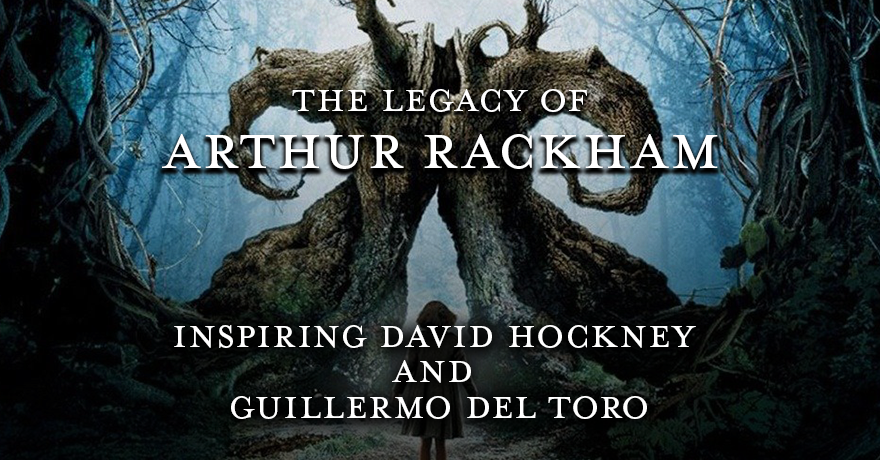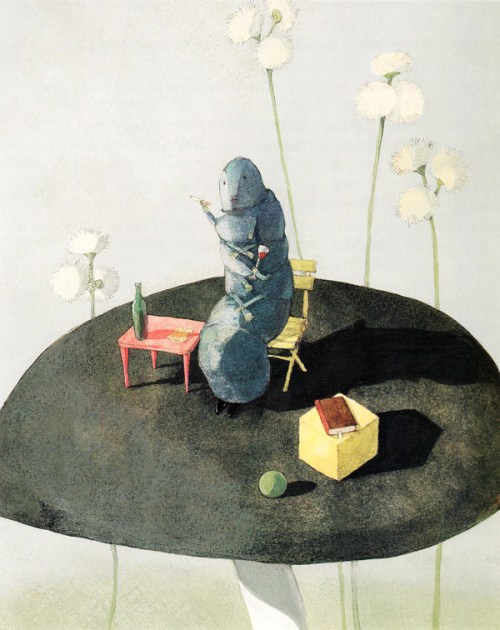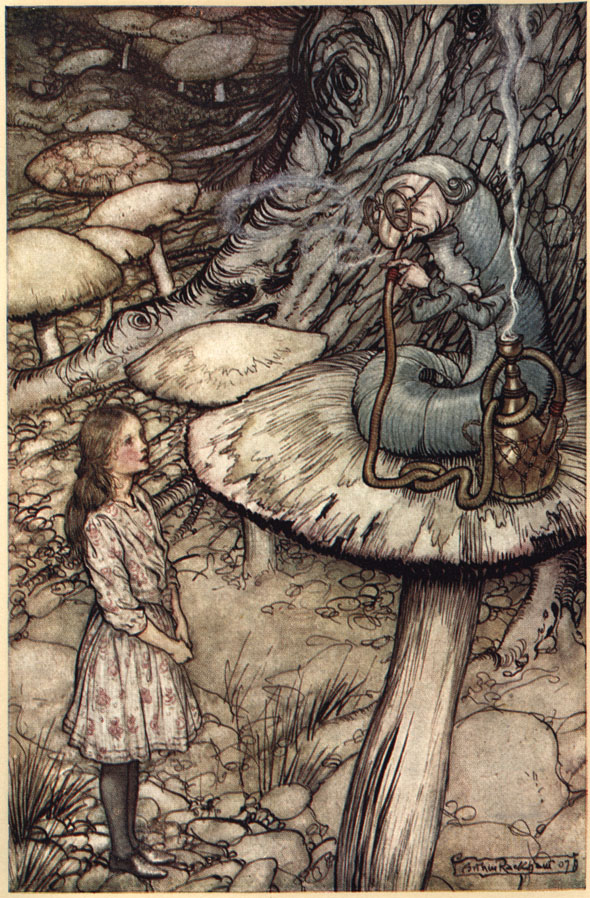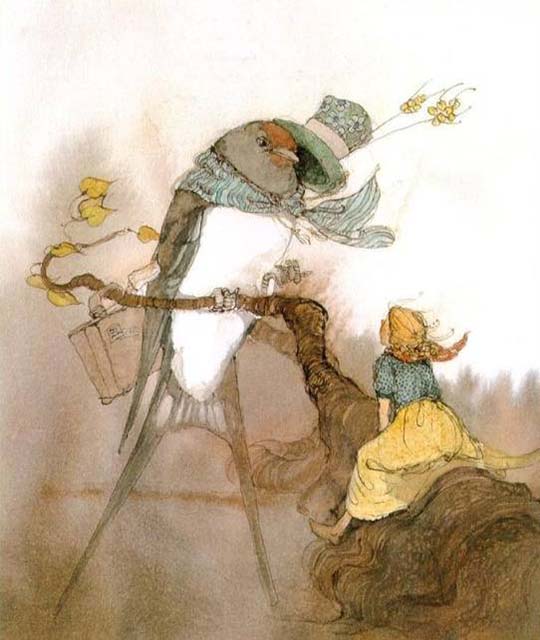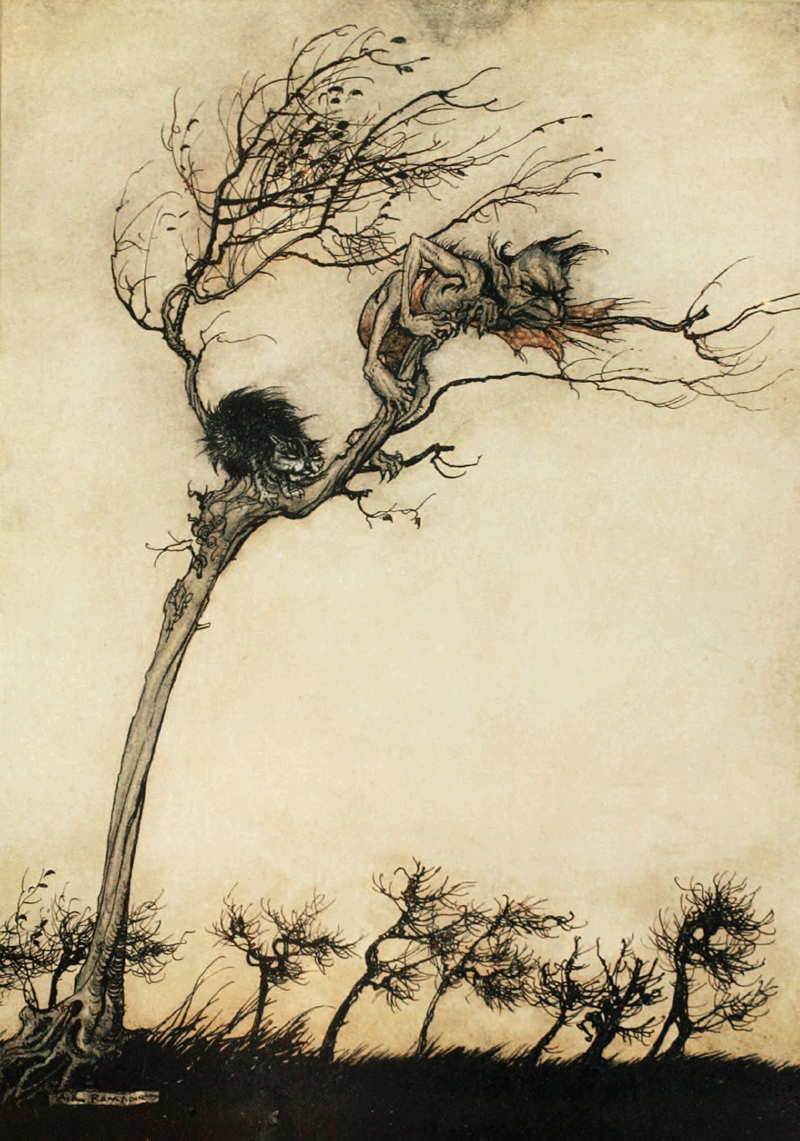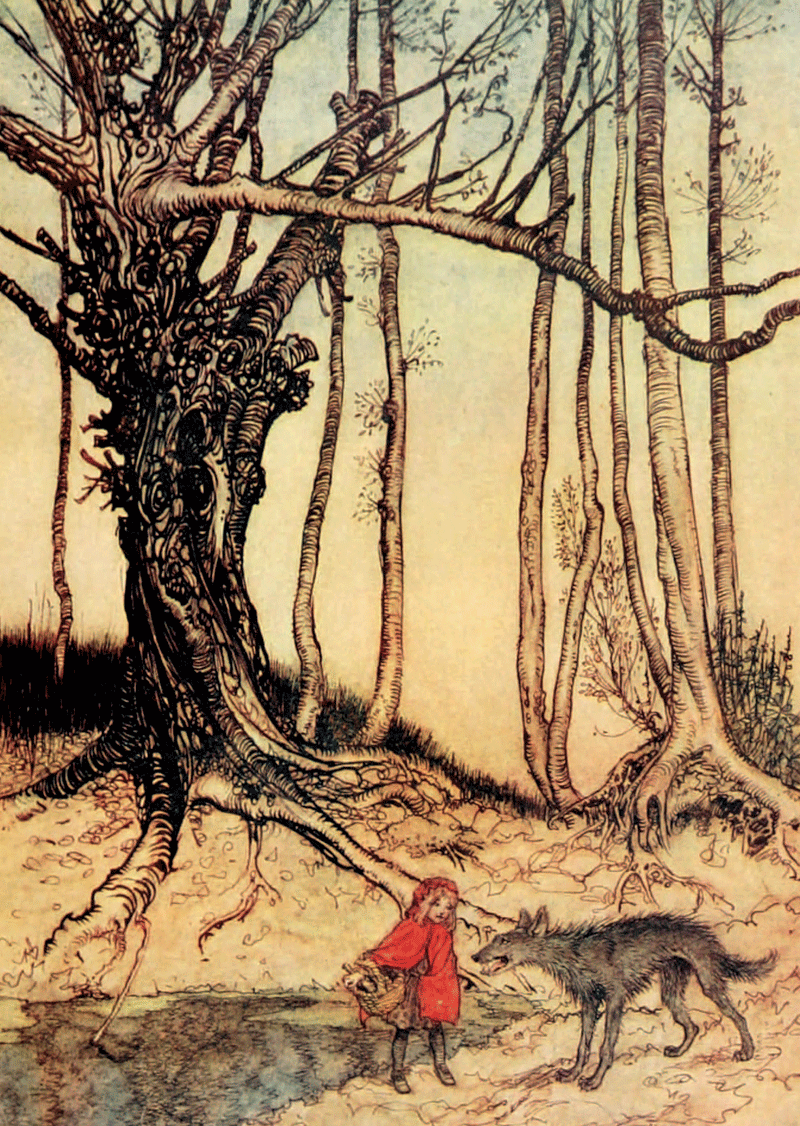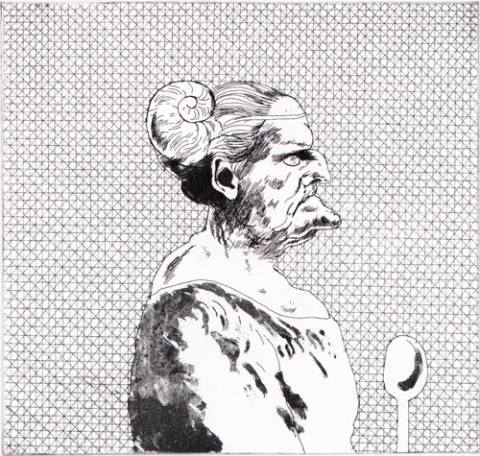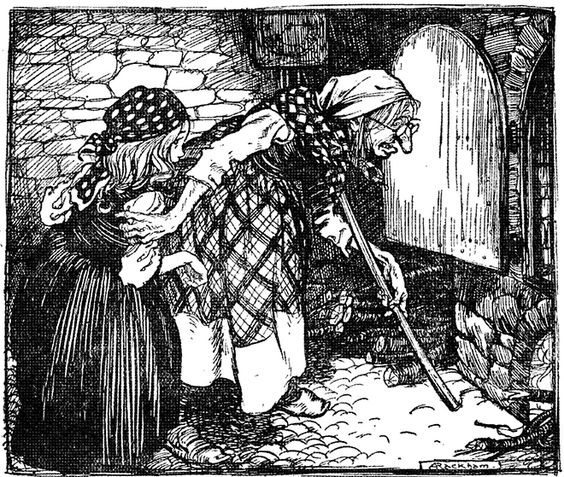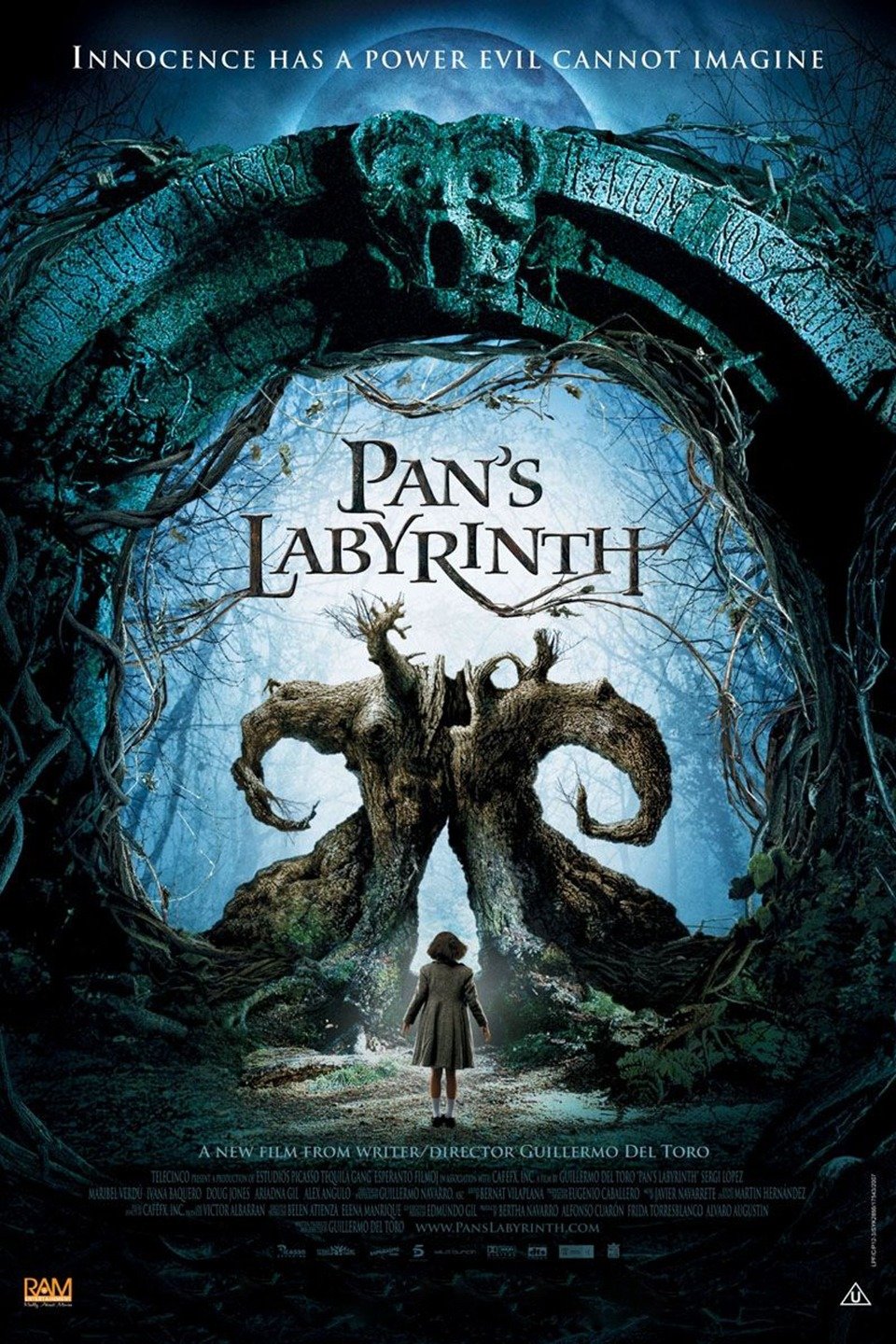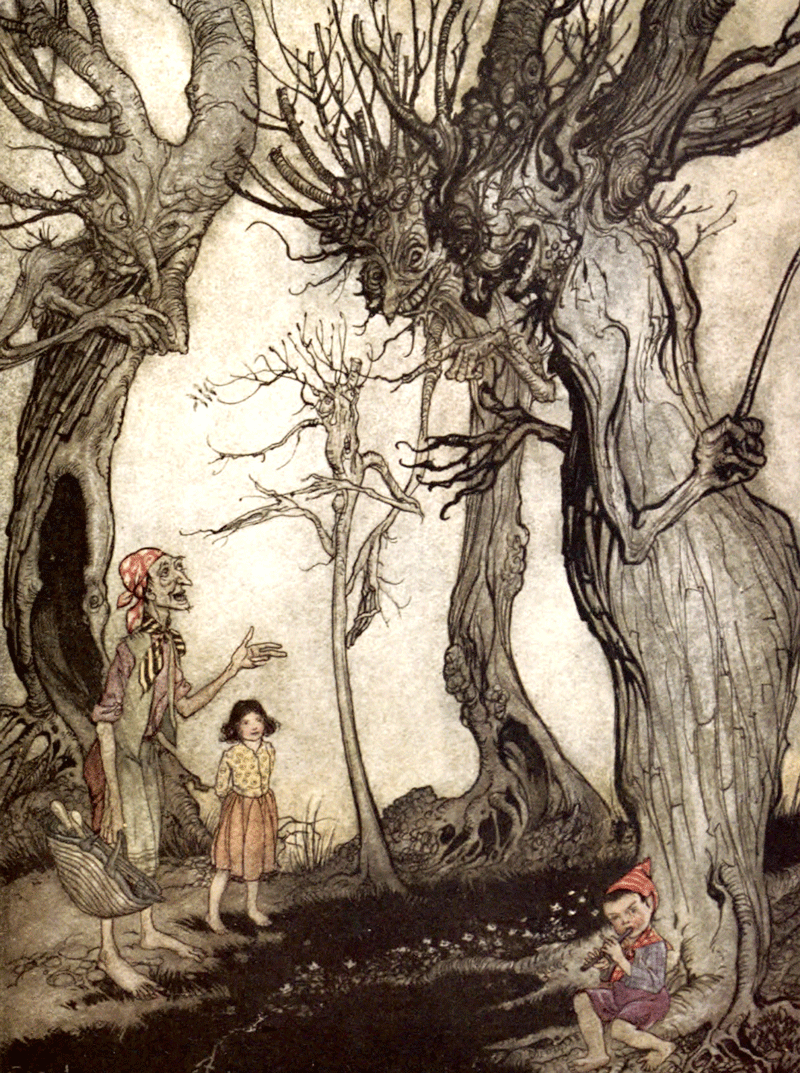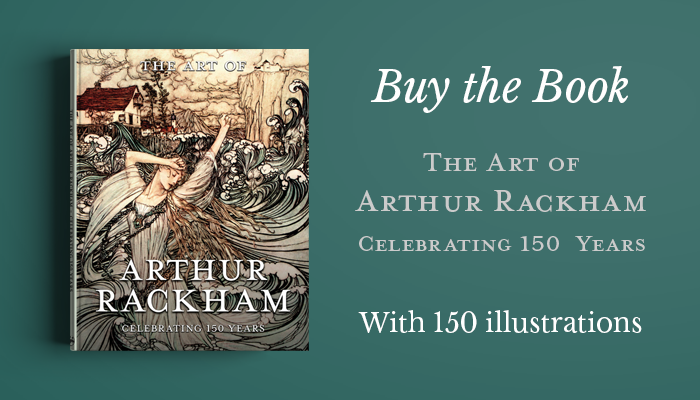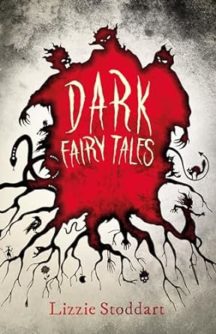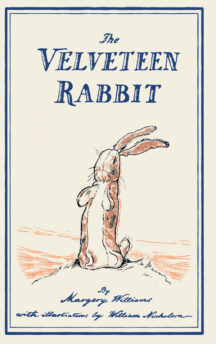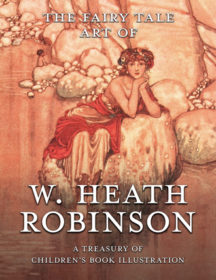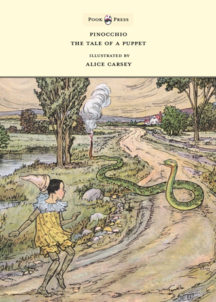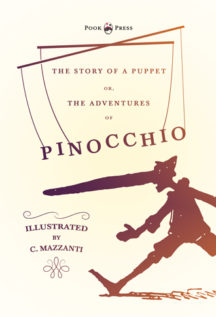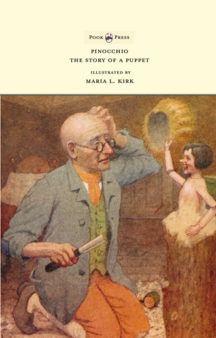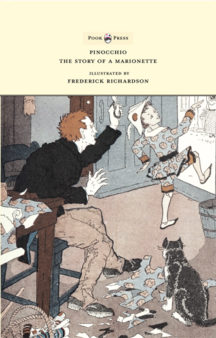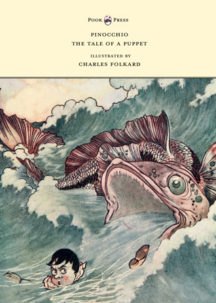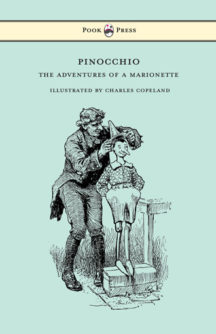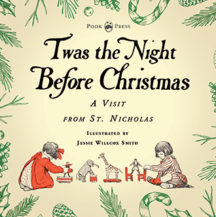The Legacy of Arthur Rackham – Inspiring Hockney and Guillermo del Toro
The Legacy of Arthur Rackham’s Work – Inspiring David Hockney and Guillermo del Toro
Arthur Rackham, one of the most influential and renowned illustrators of the 19th Century (known as the greatest illustrator of the Edwardian era). There are very few fairy tales that he did not illustrate, thus his legacy is one not to be trifled with. An inspiration to artists old and new, Rackham’s work has been the source of many an original form of art and is a testament to the continuation of traditional story telling through images.
As a special celebration of Rackham’s work and legacy for his 150th year, we have put together a list of artists who have been inspired by him.
One particularly original artist who has been inspired by Rackham is Corwin Levi, who’s collection of collage works is definitely worth a mention. His collage style features an amalgamation of works from different traditional artists including Rackham, Robert Leinweber, Otto Ubbelohde, Kay Nielsen others. Levi’s work is particularly potent as it also draws attention to the lesser known fairy tale artist’s fluidly marrying their works and bringing to light the common style of the time and the fact that artists would have each drawn from each other’s style. Rackham would have been one of the more highly followed artists when it came to contemporary influences.
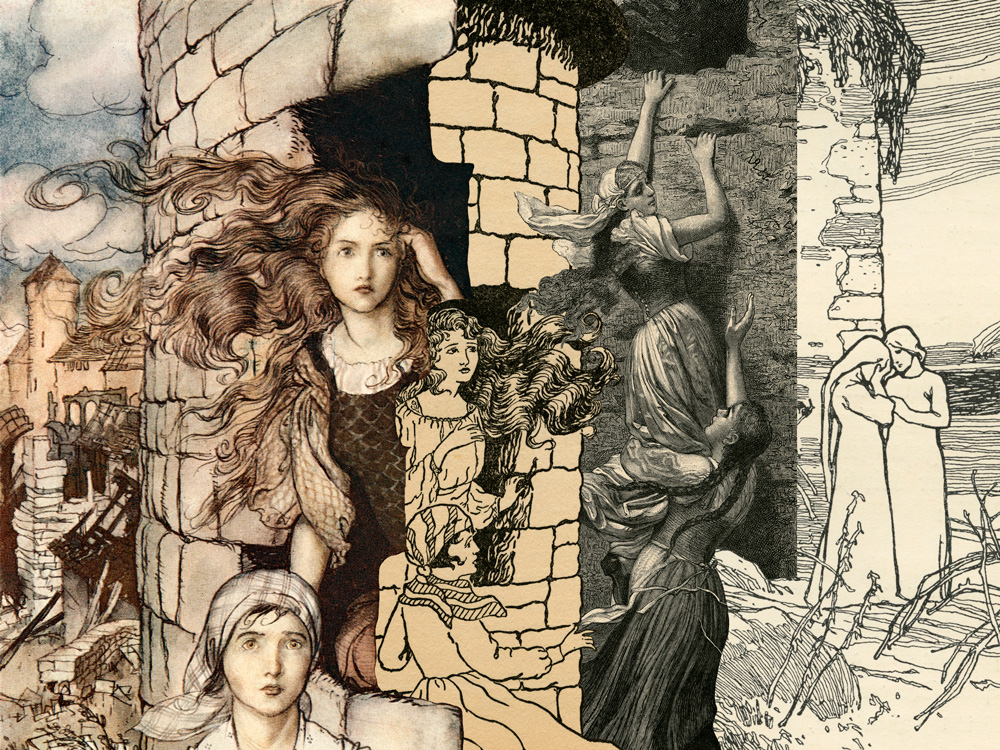
Maid Maleen, Remixed by Corwin Levi
-
Lisbeth Zwerger
A big influence particularly on her earlier works, the Austrian Lizbeth Zwerger was so passionate about Rackham’s style and work that he was actually the reason that she became a professional and award-winning children’s book illustrator. Having dropped out of art school and reaching a stage in life when her love of drawing had almost completely faded away, it was only when she saw a book of Rackham illustrations that she suddenly regained her passion for drawing.
One of our favourite images by Zwerger is from Alice in Wonderland which depicts The Caterpillar. It has a clear connection to Rackham’s depiction of the Caterpillar in terms of layout and colourisation. The colour palette and tones are very similar as is the angle at which the viewer looks upon the caterpillar on his toadstool. This image of the caterpillar is essentially a magnified snapshot which focuses on one section of the Rackham image. Zwerger’s illustrations could be described as a much more pared down and simplified version of Rackham’s work, in keeping with her modernist style.
Perhaps a more obvious connection between Zwerger’s and Rackham’s work can be seen in her earlier illustrations in which she used the bloom and bleed style of painting. Another favourite of ours, Thumbelina and the Bird clearly takes inspiration from Rackham’s depiction of trees. The loose and fluid lines used in the formation of the tree trunk resemble Rackham’s twisted tree trunks.
Rackham’s work even managed to permeate the small world of the Feminist Surrealist. Combining Surrealism with tradition Tanning merged a sense of the old with the new, inspired by the fluidity of Rackham and the obscurity of Dali. Her work harked back to the works of principal Edwardian artists with particular allusions to Rackham’s depictions of nature and trees. Her painting The Truth About Comets illustrates a highly defined linearity (making up the tree branches) similar to the silhouetted style of tree depiction seen in many of Rackham’s works.
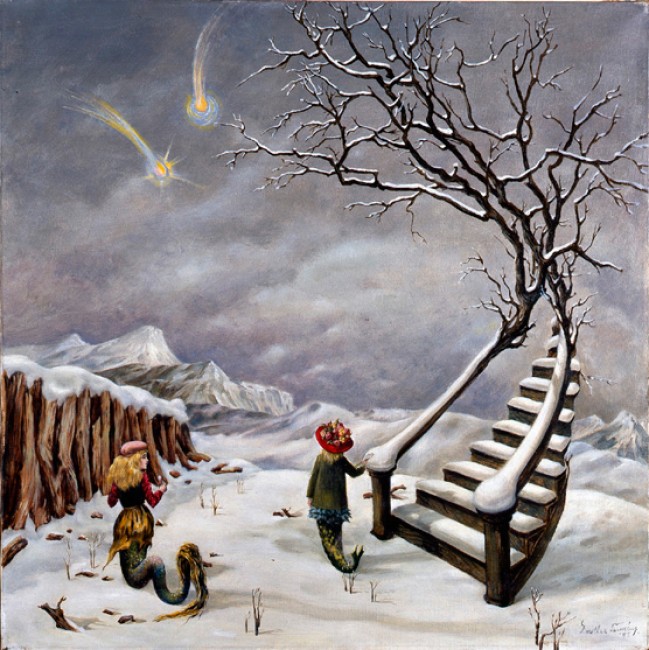
The Truth about Comets by Dorothea Thanning
Putting his own spin on traditional fairy tales. David Hockney released the book Six Fairy Tales from the Brothers Grimm: With illustrations by David Hockney. His depiction of The Cook from the tale Fundevogel (Foundling-Bird) certainly has a Rackham-esque quality, again using languid lines and spiral effects. The image of the cook has similar qualities to Rackham’s image of the witch in Hansel and Gretel. The black and white sketching and multi-textured image is reminiscent of Rackham’s varying use of pencil markings, which add interest and dimension to his images. The engraved quality of the images is also apparent. The simple geometric background of the Hockney image alludes to the canvas onto which some of Rackham’s works were printed, which if we look closely also creates a similar geometric pattern in the background of the image.
-
Guillermo del Toro
As the director of the world renowned fairy tale film Pans Labyrinth (2006) there is no denying that Guillermo del Toro has the creative mind akin to that of any great artist. Del Toro cites Rackham’s work as an influence on the design of ‘The Faun’ of Pan’s Labyrinth and it’s clear this artistic inspiration extends further into the film. The backdrop of Pan’s Labyrinth is ensconced in great looming trees, their twisting, knotted branches reminiscent of the Rackham’s tree illustrations. The grim and primal nature of the cinematic images, unsettling in their rawness also create an extremely Rackham-esque atmosphere.
We love the fact that Rackham was so inspirational that his work became not only the basis idea for works on paper but also for cinematic works. He was truly a genius who forever changed the face of the fairy tale representation.

